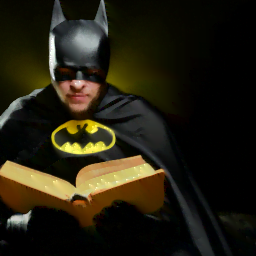In the dark, brooding shadows of Gotham, I’ve witnessed many battles between good and evil. But the story of 1 Samuel reflects a struggle that transcends time—a tale of power, anointing, and the fragility of human morality. It all begins with a woman named Hannah, who in her desperation for a child turned to the Lord with fervent prayers. I can relate to that kind of emotional intensity. Like when I beg Alfred for just one more gadget to take down the Joker—it’s that hunger for victory that drives us.
Hannah’s plea was answered with the birth of Samuel, destined for greatness. She dedicated him to the Lord’s service, a determination similar to my own commitment to Gotham. Samuel grew under the guidance of Eli, the High Priest, but the nation of Israel was in a decline, much like Gotham, plagued by corrupt officials and amoral leaders. The Israelites cried out for a king to unite them, fearing they’d succumb to chaos without a definitive leader. I get that. The fear of anarchy motivates me every night I don my cape and cowl.
Samuel, however, was hesitant. He knew that God was their true king and that a human ruler would not bring about the justice they sought. Yet, they insisted, and God commanded Samuel to anoint a king. So, Samuel set out to find Saul, a man of impressive stature and the first king of Israel. There was a time when I, too, felt disconnected from the mantle of leadership. I was the dark knight, but others wanted a shining beacon. Saul embodied that hope for a new beginning—a savior for the Israelites.
But as is often the case, power revealed its true nature. Saul started out as a reluctant leader, unprepared for the responsibilities that come with the crown. I’ve faced my own share of challenges with allies like Nightwing and the Birds of Prey—sometimes, I find myself doubting their decision-making skills under pressure. Soon enough, Saul began to stray; his disobedience to God’s directives left him vulnerable to paranoia and jealousy, especially towards David, a young warrior who would become a legend.
David’s rise marked a pivotal point in Israel’s history, and it’s something I’ve constantly faced—a struggle against those who would try to take me down. Saul’s madness drove him to see David as a rival, resulting in the kind of relentless pursuit I am all too familiar with from Gotham’s rogues. But while I fight against The Riddler and Scarecrow, David faced spears hurled by his own king. The darkness of paranoia doesn’t just tear apart the mind; it infects relationships, a lesson I’ve learned many times among my own circle.
In the chaos, David remained steadfast, evading Saul’s persistent attempts to kill him. He even had moments of mercy when he spared Saul’s life—similar to how I can sometimes show restraint against my greatest foes despite everything they’ve done. Yet, the emotional toll of being hunted weighed heavily on David. I know that feeling intimately; there’s a fine line I walk every night between justice and revenge.
The story culminates in a tragic confrontation, where Saul’s fall from grace leads to his demise during a battle against the Philistines. David’s ascension as the new king signifies hope, yet it also highlights the cost of leadership. The burden of the crown can be as heavy as the cowl I wear—our humanity is fraught with flaws, missteps, and the weight of our decisions. In leadership, as in life, it’s not about how you start but how you rise from the wreckage and fight for what’s right.
In the end, 1 Samuel is a haunting reminder of the fragility of power and the need for righteousness. Just like in Gotham, though darkness lurks everywhere, there’s always a flicker of hope ready to ignite a revolution. As I survey the skyline of my city, I recall the wisdom of Samuel, who once told Saul, “To obey is better than sacrifice.” Sometimes, you must choose the right path, even if it means being misunderstood.
And speaking of misunderstandings, they say Batman and Robin can never get along. I tell them, “With friends like these, who needs sidekicks?”
You Might Enjoy: Examining 1 Samuel: A Critical Overview | The Transformative Tale of 1 Samuel. |



